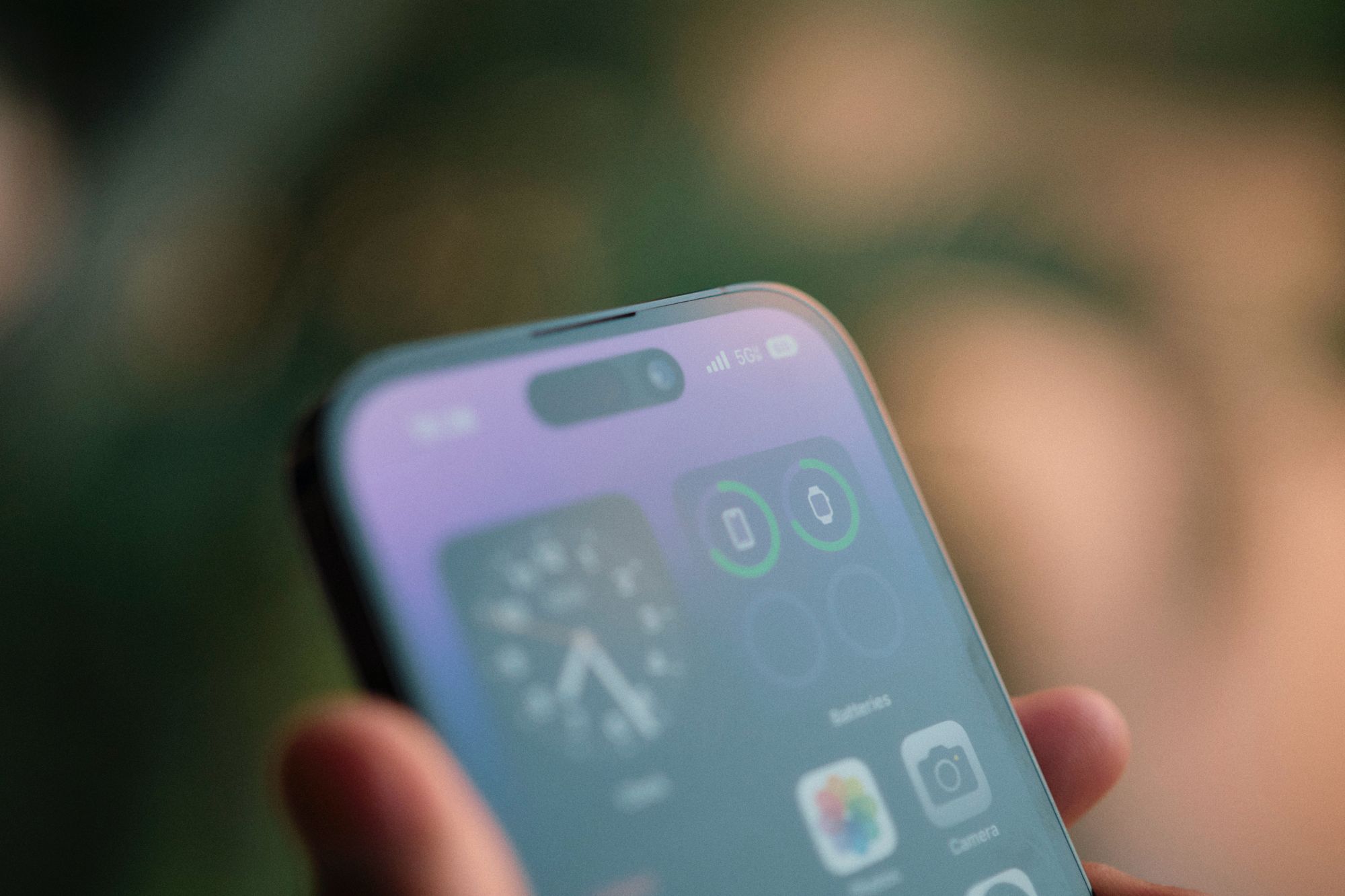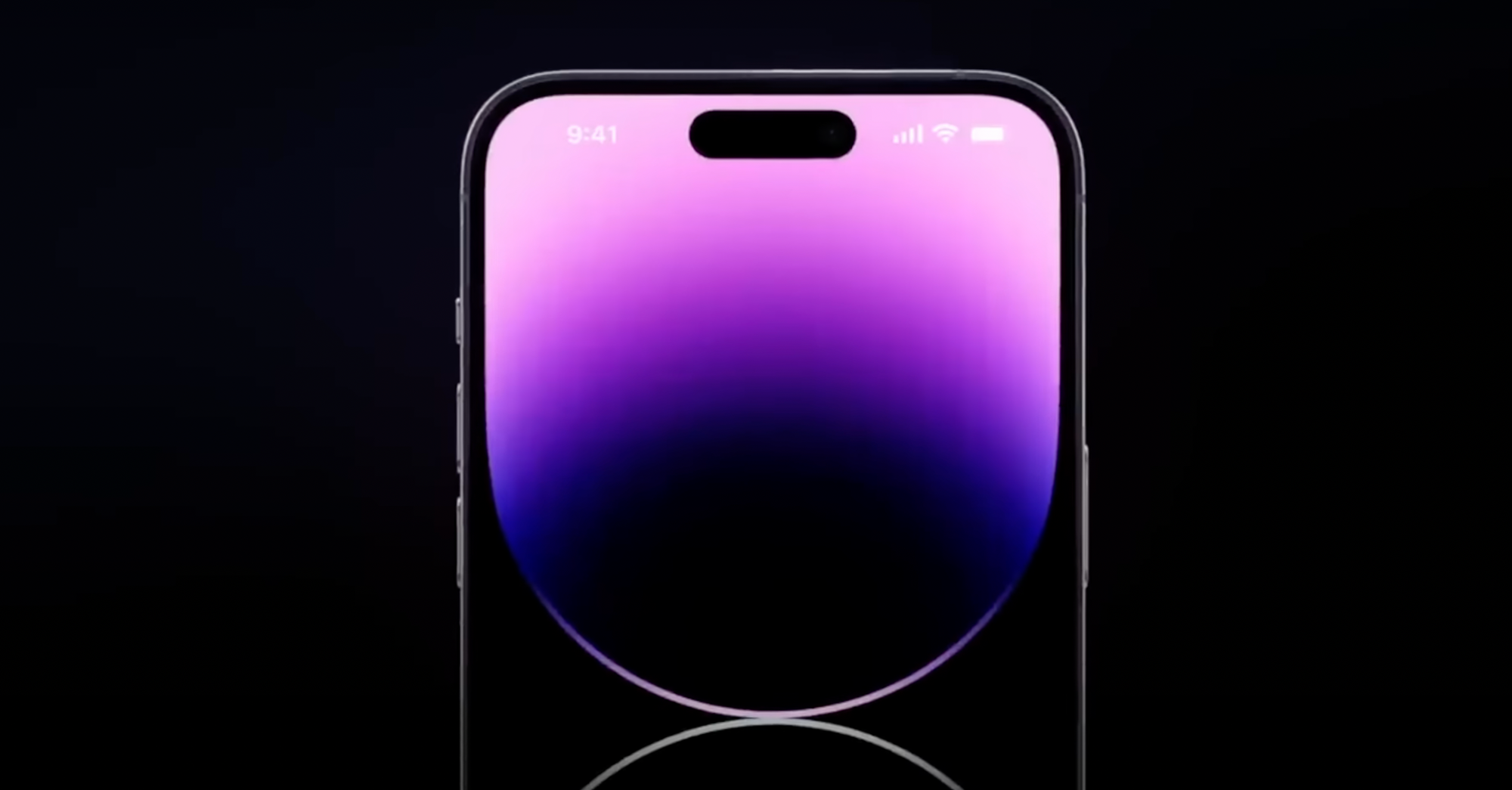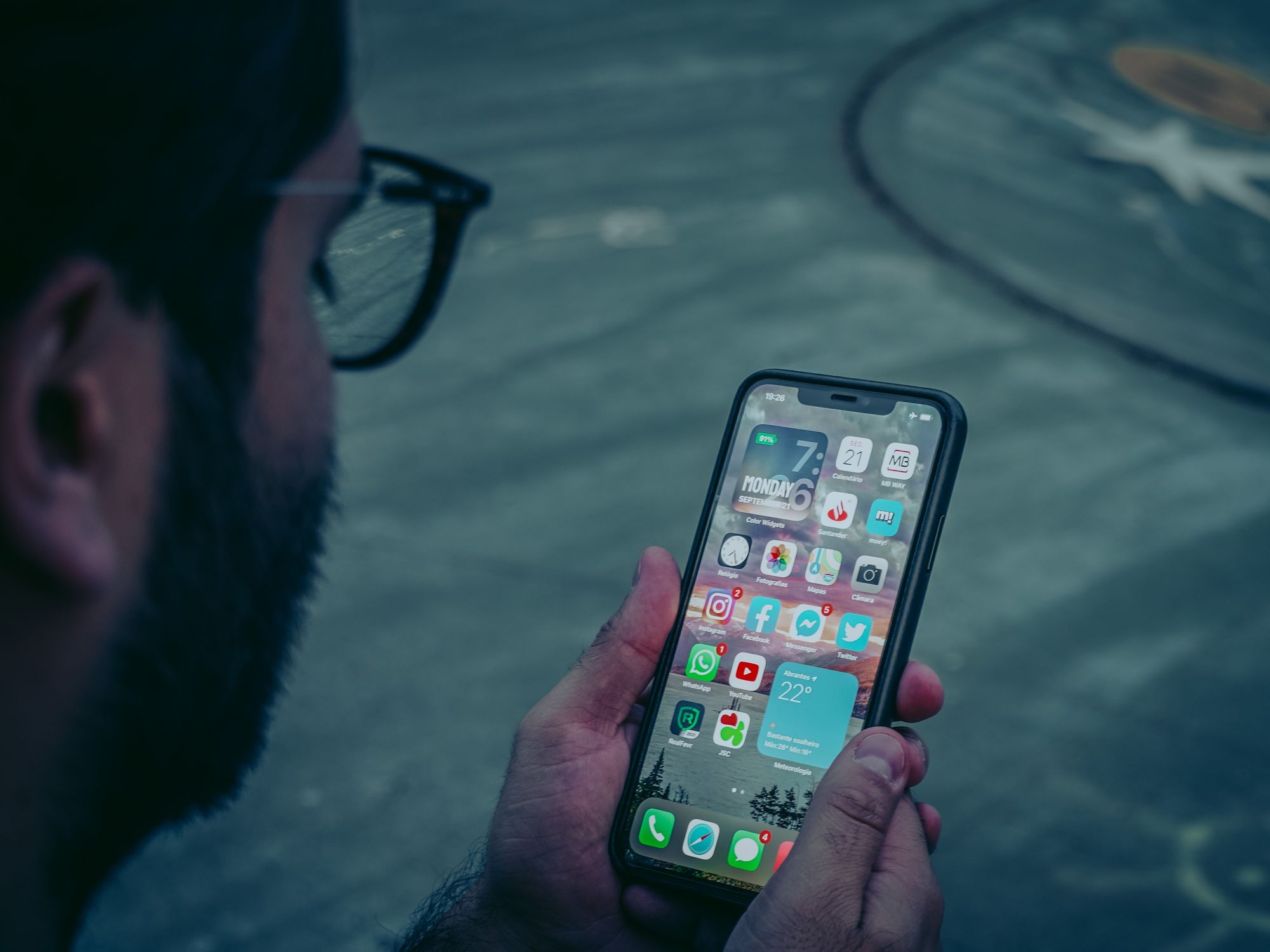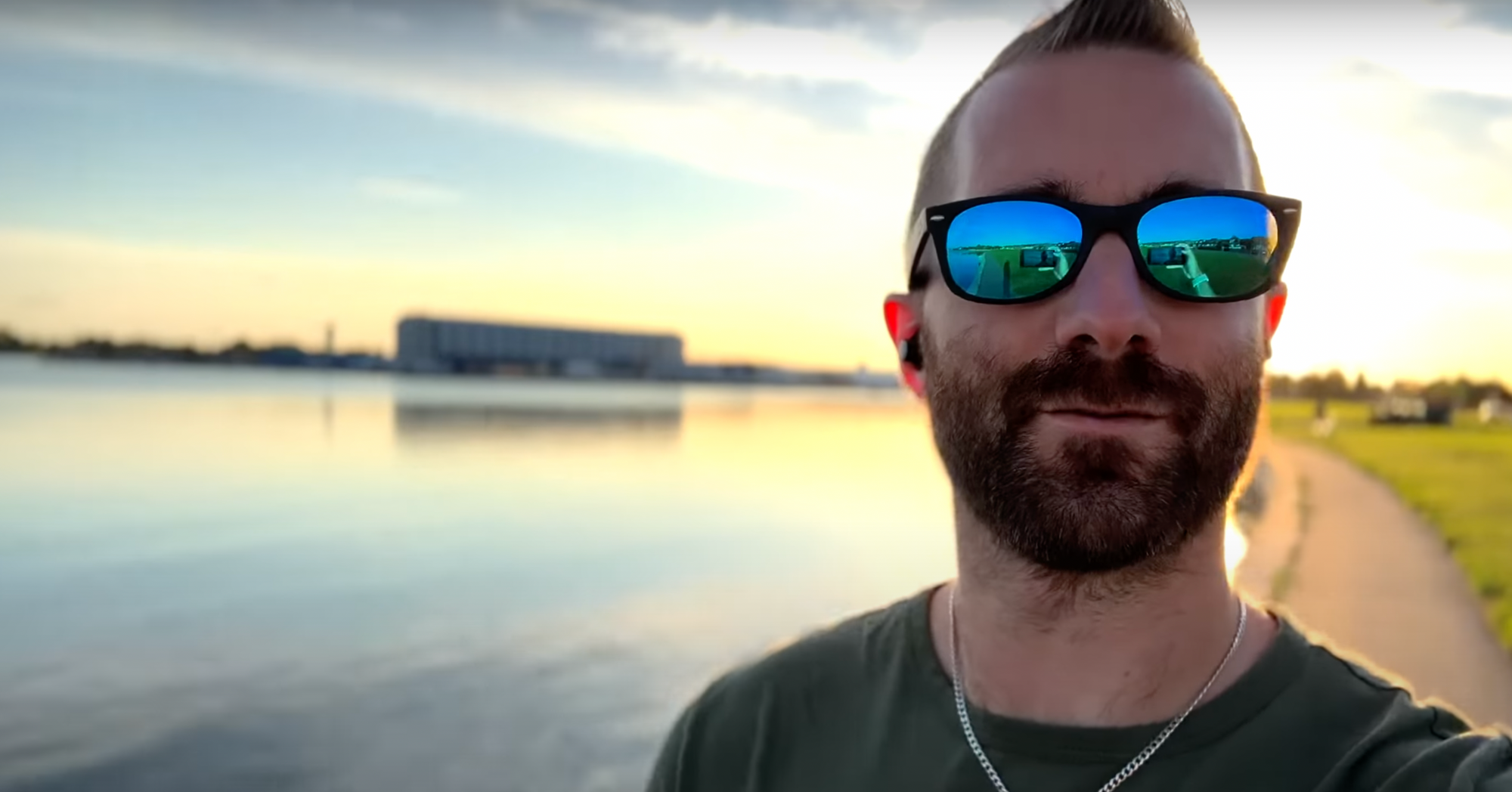The iPhone 14 Pro Max is better than the S22 Ultra, and if you don’t believe me, here are 10 reasons why...
Let’s start off with the first reason and that is with the beautiful new...
Always On Display
I know I know, the always on display (AOD) has been available on Android for years already. But I actually do like Apple's implementation of it on the new iPhone 14s.

Essentially, the screen works just like an Apple Watch, where it will go down as low as 1hz, to consume minimal battery, but will still be able to display the time, some limited complications, and full notifications.
The implementation goes beyond just having an always on display, but for me it’s the things that you probably won’t notice about it. Like the AOD turns off when you put the phone in your pocket. It also turns off when you walk away from it whilst wearing an apple watch. Clever stuff Apple!
Battery
Even though the S22 Ultra has a 5000 maH battery, which is bigger than the iPhone 14 Pro Max’s 4,323mAh, the iPhone absolutely smashes the battery life tests in practically any way you look at it.
I’ve seen this in my own tests when using these 2 phones, with the iPhone 14 easily getting a 2 day battery life with over 10 hours of screen-on time, stretching up to nearly 12 hours - it’s absolutely insane. Yes, you do have to switch off the AOD to get that level of battery life. But you can’t argue that it’s still very, very impressive.
And that's all due to the iPhone having a more efficient chipset powering it, with the A16 Bionic.
So if you are needing a phone with the absolute best battery life, then the iPhone 14 Pro Max is the only one that you should really be considering.
Dynamic Island
The next one is one where we all hate the name, but it looks like it’s here to stay, and that is Dynamic Island.
This is the evolution of the notch. And even though moving the notch down onto the screen actually takes up more room than it did previously, Apple has put a whole new spin on what, otherwise, turns out to be an eyesore.

Now, it’s not quite as cool as Samsung’s self-hiding camera like we saw on the Galaxy Fold 4 but, instead, what they’ve done is turn this area into potentially quite a useful part of your phone.
So instead of starting a timer, or playing music and then swiping into a different app, then having to remember to go find the app to pause things, now those apps minimise to this kind of dock at the top. Long press to get a preview of what’s going on, and short press to jump straight back to the app. And with 2 things going on at once, it even splits them so you can get back to both of them easily.
It’s nicely animated, and it does make what would be the eyesore of a regular pill or notch way more bearable, and I’m keen to see what the other app makers do with this new feature.
Yes, this might be copied from LG V10, but as always, it’s a case of Apple taking something and really making their mark with perfecting it.
Max Brightness and M12 OLED vs M11 on Ultra
Even if you think the Dynamic Island is leaving you questioning my sanity, the next one is a pretty clear cut winner, and that is the 2000 nits peak brightness on the iPhone 14 Pro Max.
The S22 Ultra does peak near to that though at 1,750 - but I have definitely noticed in some of the rare sunshine we get here in the UK that, at 2000 nits, it just feels like you’re looking at your phone indoors. It’s so clear and bright and easy to read that there are zero issues.
I mean, 2000 nits is the same as Apples $5k Pro Display XDR which is crazy!
Realistically speaking, there’s not a huge difference between 1,750 and 2000 - but it’s the same when comparing say, a Macbook Air to a Pro - just a small difference in peak nit brightness can make a big difference when outdoors, and right now, much like battery life, the iPhone 14 Pro Max is the king of peak nit brightness.
Face ID
Which brings me to the one feature that I still struggle to get used to on every Android phone I own: unlocking your phone.
We have Apple's Face ID, vs Android's fingerprint.

I’m discounting the fact that Android also has Face Unlock, which you’d think is their version of Face ID. And you’d be right. But the technology behind these 2 are worlds apart.
With Android, it essentially takes an image of your face and then compares this with data it holds to know if you are you.
Whereas with iPhone, and the reason why we have this whole Dynamic Island thing instead of a single front facing camera, is that we get a tonne of additional sensors on the front which will map your face in 3 dimensions.
The implementation is much more secure than Android, and Android even warns you on most phones to not use Face Unlock because it’s insecure.
But what about the fingerprint reader? It’s a very personal opinion, and one that, over time, you of course develop natural instincts to put your finger in the right place to unlock the phone. But on some android phones the fingerprint readers can be janky and cause you to have to try a couple of times to unlock your phone.
But FaceID has never failed me. I pull the phone out of my pocket, and as soon as I look at it, it’s unlocked.
Yes it would be nice to not have to swipe up, I'll give that to Android.
But say my phone is on the table, I get a notification, I can’t read what the notification says because it’s locked, but on an iPhone I can just literally hover my face above the phone, even at an angle, the phone unlocks, and I can see what the notification said without even touching my phone.
I find it more natural for everything, unlocking the phone, installing apps, the iPhone also has a hidden photos area where you can only get to it with your face - which doesn’t require you to shift your grip on the phone to get to that under screen fingerprint sensor.
So overall, personally I find FaceID a better method of using my phone and authenticating that I am who I am. That’s not to say the S22 Ultra fingerprint reader is bad, it’s actually one of the best there is. But FaceID, I believe, trumps fingerprint.
Which do you prefer though, Face ID, or Fingerprint?
A16 Bionic vs Snapdragon 8 Gen 1
The chipsets now: A16 Bionic vs Snapdragon 8 Gen 1.
And Apple was already so far ahead with the A15, that the A16 has only extended that lead even further.
Compare any of the benchmark tests and the iPhone absolutely dominates them, in speed, core performance, power efficiency, graphics - it absolutely destroys the S22 Ultra on paper.
For those ‘serious’ gamers, the iPhone 14 Pro Max will give you better and faster performance, consuming less power, generating less heat and overall giving you a better gaming experience on an iPhone. Providing, of course, that the game you want to play is available on Apple.
Cameras
And it wouldn’t be an S22 Ultra vs iPhone 14 Pro Max comparison without mentioning the cameras.
Actually, it’s pretty close in most of the departments! You’ve of course got the S22’s 10x lens and it’s crazy 100x zoom features, but where the iPhone wins, in my eyes, are in 2 key areas.
First, Cinematic Mode.
I have seen some significant improvements in Cinematic mode with the iPhone 14 Pro Max over the older generation.
You get a great image quality, at 4K and 24, 25 or 30fps - and with their very clever image processing that will intelligently shift focus to different people in frame at the right times.

And not just that, but AFTER filming you can watch the video back, realise that it totally missed focusing on something, and you can change it! You can actually, literally just change the focus of the whole video.
This is crazy Harry Potter wizardry.
I remember seeing some mental blog post a few years ago about a camera that was a bazillion megapixels, it was so complicated that you had to wear a backpack with all of the clever bits inside, and the camera would basically snap a photo at every focus point, so after you took the shot, you could go into the software and choose which point you wanted to focus on. That seemed ridiculous, and even more so ridiculous when Apple has actually achieved this using software that’s housed in a tiny, tiny iPhone, and not even a big ‘professional’ DSLR or Mirrorless camera.
So that’s the first, and the second is their stabilisation mode.
I do have to say, I’m sorry, but the S22 Ultra’s stabilisation mode just looks really janky to me and the resolution looks horrible.
But compare that to Apple’s stabilisation mode, which shoots at 2.8K resolution and crops in a fair bit, but does give you a better overall image quality for fast moving subjects. That one is a small difference I think, but it’s still one to mention.

Shutter Lag
I’ve used this phone in so many different environments now that I have seen a noticeable difference to how reliable each phone is to take a photo when I want to take a photo.
Point the phones at something. Tap away to snap some photos and you'll notice that the S22 Ultra is a fraction behind the iPhone when taking photos. This isn’t all that much of a problem in the real world, and only something you see when holding them side by side. But if I tap a bit faster, you’ll notice that the S22 Ultra will start to just miss about half of the photos that the iPhone takes.
And this is just a minor example of where the problem lies. When I’m out and about with the S22 Ultra, I’ve been in some darkly lit restaurants with friends and have gone to take a photo, only to tap the shutter button, to then wait a second or two for the phone to figure out what it needs to do to take a good photo.
Literally a second or two where the phone like, lags, and then snaps the photo.
The iPhone, in the exact same scenario, never has an issue. Snaps the photo straight away.
And that’s not taking into account night mode, but perhaps that’s what the S22 is trying to figure out if it needs night mode enabled or not? I’m not sure.
But like I said, 1. There is shutter lag. And 2. there’s a reliability question there as well.
At least with the iPhone, I know if I want to take a photo, I’ll be able to take a photo immediately.
Audio Quality
Then we have the audio quality, and this one is all about the loudness and quality of audio that comes from each phone.
And I’m going to use a very specific reference point here, but when I take the iPhone into the shower, I don’t even need to turn it up to full volume to be able to clearly hear it. Whether it’s a YouTube video, a Podcast or music.
The S22 is still good, but I just find it’s not as loud, and the audio gets muddy when the volume is turned up.
Like I said, a bit of a fringe case here, but it’s one I notice particularly in my normal every day life.
Emergency SOS
Emergency SOS via Satellite. A feature that nobody cares about, until they need it.
Kinda like insurance.
And I’m not going to sit here and say that this Emergency SOS feature is something that’s going to revolutionise every iPhone user's life.
But what I did want to comment on, is that for a very small number of people. The Emergency SOS feature is going to be a literal life-saving feature.
Emergency SOS will let you text the emergency services using a satellite, even if you are stuck in the literal arse end of nowhere with no phone reception of wifi signal.
If your phone doesn’t have signal, so no wifi and no phone reception at all where you can’t even make phone calls, you may still be able to call the emergency services, so 911 or 999 or whatever it is in your country. You dial the number, and your phone knows that it’s an emergency, it will try and hop on ANY network it can find, just to make that call. It doesn’t matter if you have a contract with that provider or not, the emergency protocol is there so that you can still make a call even when your cell provider has no signal.
For the Emergency SOS via Satellite, it’s a feature that’s only currently available in the US BUT, like I said, all it takes is for one person to have their life saved by this feature, and it’s worth all of the money in the world to that person's family.
Bluetooth 5.3
There is also one small one to mention, with the iPhone 14 supporting Bluetooth 5.3 on both the iPhone and Airpods Pro 2s, there’s a chance that they could introduce a new feature called Low Energy Audio. This means better audio quality, at lower bitrates and less power hungry, PLUS the ability to have multi device connectivity without the need to switch between devices. This would be a step up over the current Apple chip which lets you automatically switch devices when you say pick your phone up to answer a call - as it would just let you play audio on that device as well.



